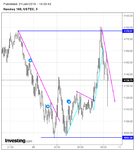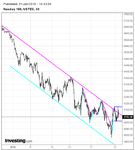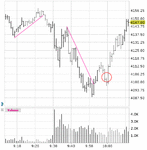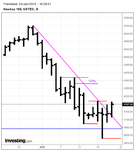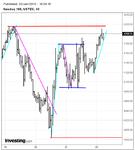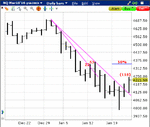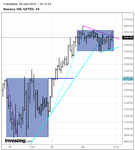Got another request for an interview, this one pertaining to how one goes about trusting software, tools, vendors, etc. I responded that one develops trust through his own efforts in studying the market, not by sorting through electronic junk mail and the claims of anonymous strangers.
The "Developing A Plan" section of the book is fifteen pages long. This is far too long for the average beginner, so I've clipped it to one page. Though this doesn't provide nearly enough information for the beginner to develop a plan, if he wants to do so, it does enumerate the requirements for developing trust in what one is doing. If the trader prefers to squander thousands of dollars on nonsense and years of wasted effort on purposeless activity, that is his choice. One is ultimately responsible for oneself.
===================
In order to succeed at trading, you must have an
edge. Your edge begins with the knowledge you gain through your research and testing that a particular market behavior offers a level of predictability that provides a consistently profitable outcome over time. Without it, one is just "playing" the market in order to have something to talk about on message boards. To get it, you have to know exactly what you're looking for and what to do with it once you've found it. [clip]
The first step is to decide what kind of trader you want to be. [clip]
The second step is to decide what you're going to trade and when you're going to trade it. [clip]
The third step is to develop your system. This is the process required if you make substantial modifications to the SLA/AMT.
A system consists of (a) a set of rules that you use to
select profitable positions and (b) a set of rules that you use to
manage the trade once you're in it [clip].
• Developing a system begins with deciding just what it is you're looking for. Therefore, begin by studying price movement in real time (or at the end of the day through "replay", if your charting program offers it). By "study", I mean to observe it with intent, not just read about it or listen to somebody talk about it. You have to understand what you're looking at before you know what to look for. [clip]
• Develop a set of preliminary hypotheses which exploit the profit opportunities presented by these movements. [clip]
• Decide what strategy will best take advantage of what you think you've found [reversal, breakout, or retracement]. [clip]
• Carefully define the setup (the set of circumstances which you define which triggers an entry) which implements this strategy, preferably using old charts (attempting to define the setup by studying realtime charts is inefficient since you don't yet know what it is that you're looking for). [clip]
• Forward-test what you have so far, again using old charts, preferably replaying them (if replay is not available to you, then scroll through them, bar by bar). [clip]
• Paper-trade this plan, in a simulated environment, as a semi-final test, until you are satisfied that it performs at least as well as it did during the previous testing phase. [clip]
• Trade the plan using real money in real time, spending only what is absolutely necessary on "tools" and trading the minimum number of shares, contracts, etc., allowable. [clip]
• If your plan is consistently profitable in practice, increase your size to what is a comfortable level, maintaining a continuous loop of re-appraisal and re-evaluation. [clip]
And that's it. How long does it take?
*click*


